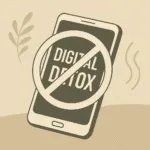First of all, switching careers isn’t about leaving your past behind — it’s about redefining your value and aligning it with what truly fits you today.
🔁 From Coding to Conversations
First of all, switching careers isn’t about leaving your past behind — it’s about redefining your value and aligning it with what truly fits you today.
At IBM, I genuinely enjoyed 💻coding — building, solving, and creating from scratch (I still love it). But over time, I found myself drawn to a different kind of challenge — one that involved conversation, persuasion, and real-time decision-making.
Interestingly I heard: “The one who can sell, can do any job on this earth and beyond” (Getting money💰 out of someone’s pocket is like squeezing water from a stone.)
That curiosity led me to Dell, into a sales role. The transition was far from easy — but it was purposeful, and one of the best professional decisions I’ve made.
🎙️ The Interview That Changed Everything
In my very first round interview, the HR manager at Dell joked:
“Coding is more of tak-tak-tak (💻Keyboard Storkes) … but sales are into bak-bak-bak (🗣️Persuasive conversations)”
(He said that with no intention of offense, maybe he was surprised)
He laughed, then asked, “But seriously — how would you sell?”
My answer was simple:
“Who better to sell a Product than someone who knows how to build it?”
That was my first sale — to him. To cut the story short, a few rounds of interview and I had the offer.
✅ Mission accomplished.
So how did I make the leap?
🚀 7 Practical Steps to Switch Careers Successfully
1️⃣ Clarify Your Why
Before you update your resume, get clear on the reason you’re switching.
Ask yourself:
- Are you chasing growth?
- Escaping burnout?
- Seeking better alignment with your strengths?
🛠 What to do:
- Journal your motivations and frustrations.
- Identify patterns — what’s missing in your current role?
- Talk to professionals in your target industry and ask what surprised them about the switch.
🎯 A well-defined “why” keeps you focused when the journey gets uncomfortable.
🧠 Pro tip: Take the full career assessment (about 15–20 minutes) on 🔗 CareerExplorer by Sokanu
2️⃣ Map Old Skills to the New Role
Your experience is more valuable than you think — if you know how to frame it.
🛠 What to do:
- Create a 2-column sheet:
Column A: Current skills
Column B: How they map to the new role
- Highlight strengths like communication, problem-solving, data handling, or stakeholder management.
💡 Tools to use:
- SkillUp by Simplilearnv (free upskilling)
- LinkedIn Skill Assessments
🧠 I leaned on my analytical thinking from engineering to sell complex software solutions with clarity.
3️⃣ Learn Before You Leap
Switching careers is a learning process — treat it like a course.
🛠 What to do:
- Follow thought leaders, attend industry events/webinars, and consume niche-specific content.
- Join relevant Slack groups, LinkedIn communities, or forums.
- Ask real professionals: “What do you wish you knew before switching to this field?”
💡 Tools to use:
- 🔗 Eventbrite – Industry Events & Webinars – Discover free and paid webinars, workshops, and virtual conferences tailored to specific industries.
- 🔗 Fishbowl – Real Conversations with Professionals – Join anonymous, verified discussions with real professionals across industries.
🧠 I spent 3 months learning how sales teams think, pitch, negotiate, and handle objections — long before my interview.
4️⃣ Rewrite Your Resume as a Bridge
Hiring managers won’t connect the dots for you — you have to do it.
🛠 What to do:
- Lead with impact – Highlight results you delivered, even if they came from a different role or industry.
- Match their language – Use keywords straight from the job descriptions you’re targeting. It shows you get what they need.
- Show you’re proactive – Add side projects, certifications, or examples where you collaborated beyond your role. These signal growth and adaptability.
- 🎯 Think of your resume as a bridge — connecting where you’ve been to where you want to go.
💡 Tools to help:
- Jobscan for matching your resume to specific job descriptions
- Canva resume templates (if you’re switching into creative or marketing fields)
- Rezi – rezi.ai – AI-powered resume writer.
🎯 Bridge your past and future by highlighting skills from your previous job that solve similar problems or add value in your new career path. This worked for me.
5️⃣ Craft Your Career Story
You’ll be asked: “Why this switch?” It’s your chance to tell a story that combines curiosity, logic, and potential.
🛠 What to do:
• Craft a concise 2-minute story that covers:
– Your past experience and accomplishments 🏆
– Your career goals 🎯 and what you’re seeking next
– Why this new path aligns with your skills and passions
• Reframe any perceived weaknesses as unique strengths💪 that set you apart
💡 Tools to use:
- 🔗 The Muse: Find articles and guides on how to answer “Why this switch?” and craft compelling career narratives. https://www.themuse.com/advice
🧠 When Dell HR challenged me, I framed my technical background as a sales strength: I could explain complex products in simple terms.
6️⃣ Start Small, Move Smart
Your first move doesn’t need to be your dream role — just the right direction.
🛠 What to do:
- Look for side projects, freelancing, part-time gigs, or internal transfers
- Consider mentorships, volunteer work, or certifications to build domain credibility
- Apply early, even if you don’t tick every box
💡 Use the 80% rule: If you meet 80% of the requirements, go for it.
🎯 I didn’t wait to “become” a sales expert. I stepped in, learned on the job, and asked smart questions every single day.
7️⃣ Build a Support Network
Switching roles can be isolating — especially if your peers are on a different path.
🛠 What to do:
- Connect with others who’ve made similar transitions
- Find mentors and peers in your new field
- Share your progress publicly (LinkedIn works wonders)
🤝 Support and accountability make the transition feel less lonely and more strategic.
🔚 The Bottom Line
Again, switching careers isn’t about leaving your past behind — it’s about redefining your value and aligning it with what truly fits you today.
If you’re even thinking about making a change — congratulations. You’ve already taken the boldest step many hesitate to take.
Remember, your next chapter won’t just happen on its own. With clear purpose and deliberate action, you have the power to design a career that excites and fulfils you.
📩 Let’s connect: If you’re planning or navigating a career switch, I’d love to hear your story. Message me — or comment below with your biggest challenge.
And if this helped you, feel free to share it with someone who’s at a crossroads.




























Leave a Reply